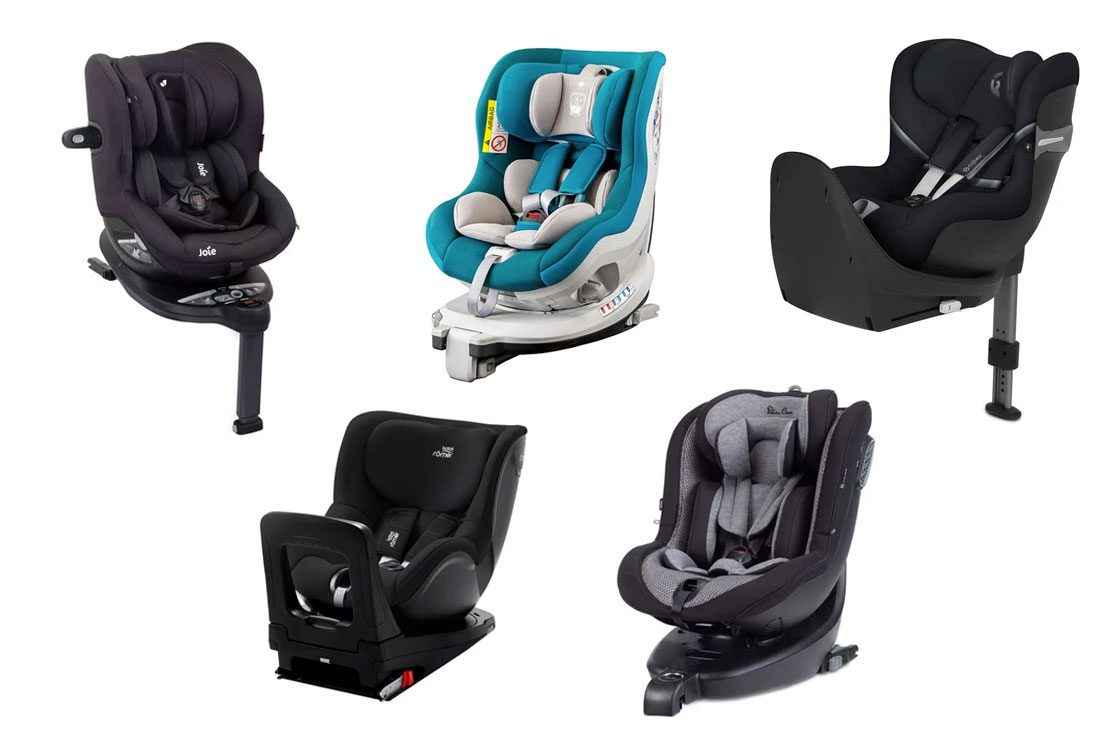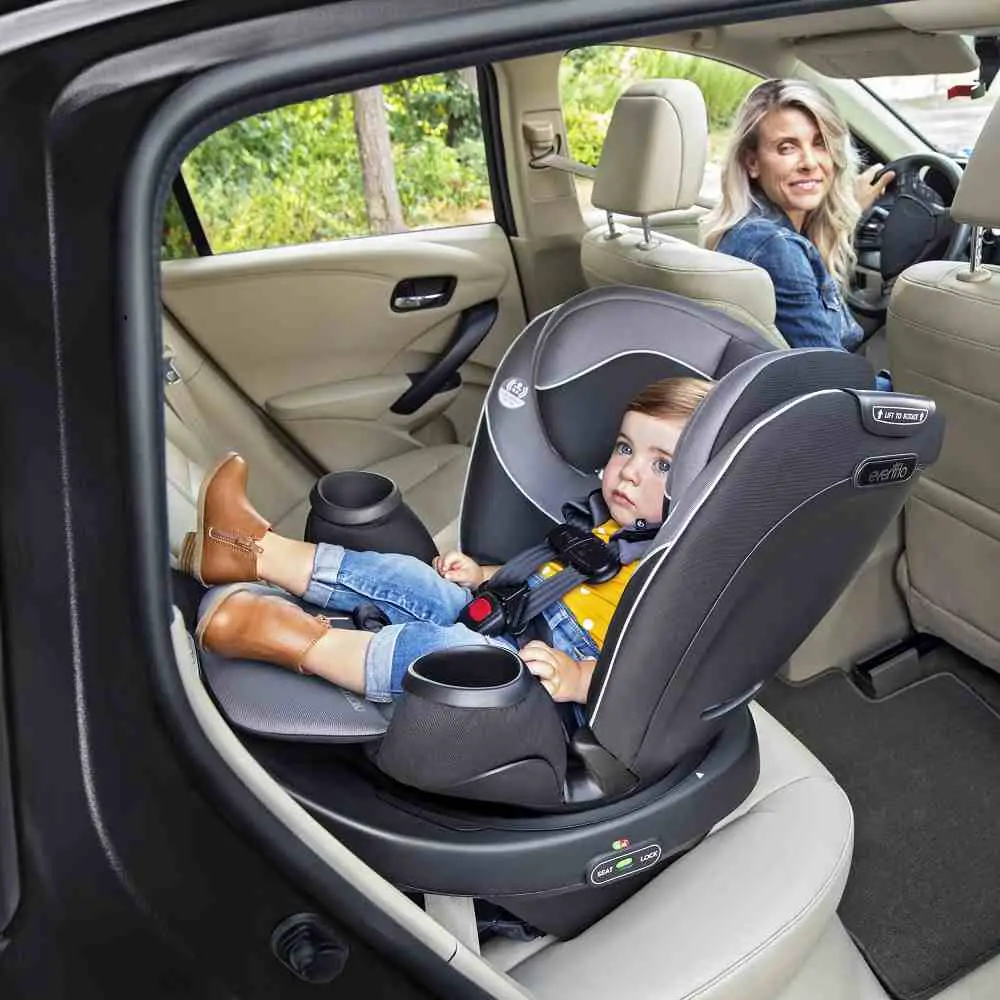When it comes to keeping our children safe while traveling in a vehicle, one of the most important decisions we make as parents and caregivers is choosing the right car seat. One type of car seat that has recently gained popularity is the rotating car seat.

These seats offer the convenience of being able to rotate, allowing parents and caregivers to easily place their child in the seat and buckle them in without having to contort their own bodies. However, concerns have been raised about the safety of rotating car seats.
This article aims to provide a detailed and comprehensive examination of the safety of rotating car seats, so that parents and caregivers can make informed decisions about the best car seat for their child.
Understanding the Mechanics of Rotating Car Seats
Rotating car seats are designed to rotate 360 degrees, allowing for easy entry and exit for the child, as well as easy access for the parent or caregiver to buckle and unbuckle the child. These seats typically have a base that stays in the car and a seat that can be detached and rotated.
Some models also offer the ability to recline or adjust the angle of the seat for a better fit in the vehicle.
Advantages of Rotating Car Seats
The convenience of being able to rotate the seat is one of the main advantages of rotating car seats. This feature allows parents and caregivers to easily place their child in the seat and buckle them in without having to contort their own bodies.
This can be especially helpful for parents and caregivers who have limited mobility or are recovering from injuries.
Additionally, some rotating car seats offer the ability to recline or adjust the angle of the seat, which can be beneficial for ensuring a proper fit in the vehicle and for providing a more comfortable ride for the child.

Safety Concerns and Standards
While rotating car seats offer many advantages, concerns have been raised about the safety of these seats. One concern is that the rotating mechanism may not be strong enough to hold the child securely in the event of a crash.
Additionally, some have raised concerns about the stability of the seat when it is rotated, and whether it is safe to use in a moving vehicle.
It’s important to note that all car seats sold in the United States are required to meet federal safety standards set by the National Highway Traffic Safety Administration (NHTSA). These standards include requirements for crash protection and structural integrity, as well as safety labels and instructions.
However, not all car seats are created equal, and some may meet the minimum safety standards but still have design flaws or other issues that can compromise safety.
To ensure that a rotating car seat is safe for your child, it is important to check for any safety recalls or other notices issued by the manufacturer or the NHTSA.
In addition to checking for recalls and safety notices, parents and caregivers should also pay attention to the installation instructions and make sure that the seat is installed and used properly.
This means checking that the seat is the right size for the child, that the seat is installed at the correct angle, and that the child is properly secured in the seat using the safety straps and harness.
Real-world Usage and Testing
It is important to consider the real-world usage and testing of the rotating car seats before making a purchase.
The National Highway Traffic Safety Administration (NHTSA) and Insurance Institute for Highway Safety (IIHS) conduct rigorous crash testing on car seats to determine their effectiveness in protecting children in the event of a crash. They also analyze the ease of use and installation of the seats.
When looking for a rotating car seat, it’s important to check the NHTSA and IIHS website for crash-test results and ease-of-use ratings for the specific model you are considering.
Additionally, independent testing organizations such as Consumer Reports also conduct their own testing on car seats and provide ratings and reviews that can be helpful in making a decision.
It’s also worth considering feedback and reviews from other parents and caregivers who have used the seat. They may be able to provide valuable insight into the seat’s performance in real-world usage, including any issues or concerns they may have had.
Choosing a Safe Rotating Car Seat
When choosing a rotating car seat, it’s important to keep safety as the top priority. Here are some tips to help ensure that the seat you choose is safe for your child:
- Make sure that the seat is the right size for your child. The seat should be appropriate for the child’s weight, height, and developmental stage.
- Check for safety recalls or other notices issued by the manufacturer or the NHTSA.
- Pay attention to the installation instructions and make sure the seat is installed and used properly.
- Check for crash-test results and ease-of-use ratings from the NHTSA and IIHS, as well as independent testing organizations.
- Consider feedback and reviews from other parents and caregivers who have used the seat.
- Consult with a certified Child Passenger Safety Technician (CPST) to ensure that the seat is properly installed and used.
By following these tips and being mindful of safety concerns, parents and caregivers can make an informed decision about the best car seat for their child, including the rotating car seats.

Conclusion
Choosing the right car seat for your child is one of the most important decisions you’ll make as a parent or caregiver. Rotating car seats offer many advantages, including convenience and ease of use, but concerns have been raised about their safety.
By understanding the mechanics of rotating car seats, the safety concerns and standards, the real-world usage and testing, and how to choose a safe rotating car seat, parents and caregivers can make an informed decision about whether a rotating car seat is the right choice for their child.
Remember that safety should be the top priority, and always consult with a certified Child Passenger Safety Technician (CPST) to ensure that the seat is properly installed and used.
What are the weight and height limits for a rotating car seat?
The weight and height limits for a rotating car seat will vary depending on the specific model. It is important to check the manufacturer’s specifications for the seat you are considering to ensure that it is appropriate for your child’s weight, height, and developmental stage.
Keep in mind that as children grow, they may outgrow their car seat and it will be necessary to move to the next stage of car seat that can accommodate their size.
Are there any special installation instructions for rotating car seats?
Installation instructions for rotating car seats may vary depending on the specific model. It is important to carefully read the instruction manual that comes with the seat, as well as any additional installation instructions provided by the manufacturer.
Some rotating car seats require special installation methods or additional hardware, so it’s important to be familiar with these requirements before installing the seat. It is also important to consult with a certified Child Passenger Safety Technician (CPST) to ensure that the seat is properly installed and used.
Are there any safety concerns with using a rotating car seat in a moving vehicle?
While concerns have been raised about the stability of rotating car seats when they are rotated, it is generally considered safe to use a properly installed and used rotating car seat in a moving vehicle.
However, it is important to ensure that the seat is properly secured and that the child is properly buckled in to reduce the risk of injury in the event of an accident or sudden stop.
Can a rotating car seat be used for a newborn?
It depends on the specific model of the rotating car seat and the manufacturer’s specifications. Some rotating car seats are designed to be used with infants and have a separate insert or head and body support for newborns.
However, it is important to ensure that the seat is appropriate for the child’s weight, height, and developmental stage. It is recommended to use a rear-facing car seat for infants, as it provides the best protection for their fragile neck and spine in the event of a crash.
Can a rotating car seat be used in an airplane?
It depends on the specific model of the rotating car seat and the airline’s regulations. Some car seats are certified for use on airplanes, and the manufacturer will typically indicate this on the seat or in the instruction manual.
However, it is important to check with the specific airline for their regulations and guidelines for using a car seat on a flight. Some airlines may require that the seat be approved for use on airplanes, while others may have specific requirements for installation or use.
It is also important to note that not all airlines provide a seat for children, and not all seats on the plane can be fitted with a car seat, so it’s important to check with the airline before flying.